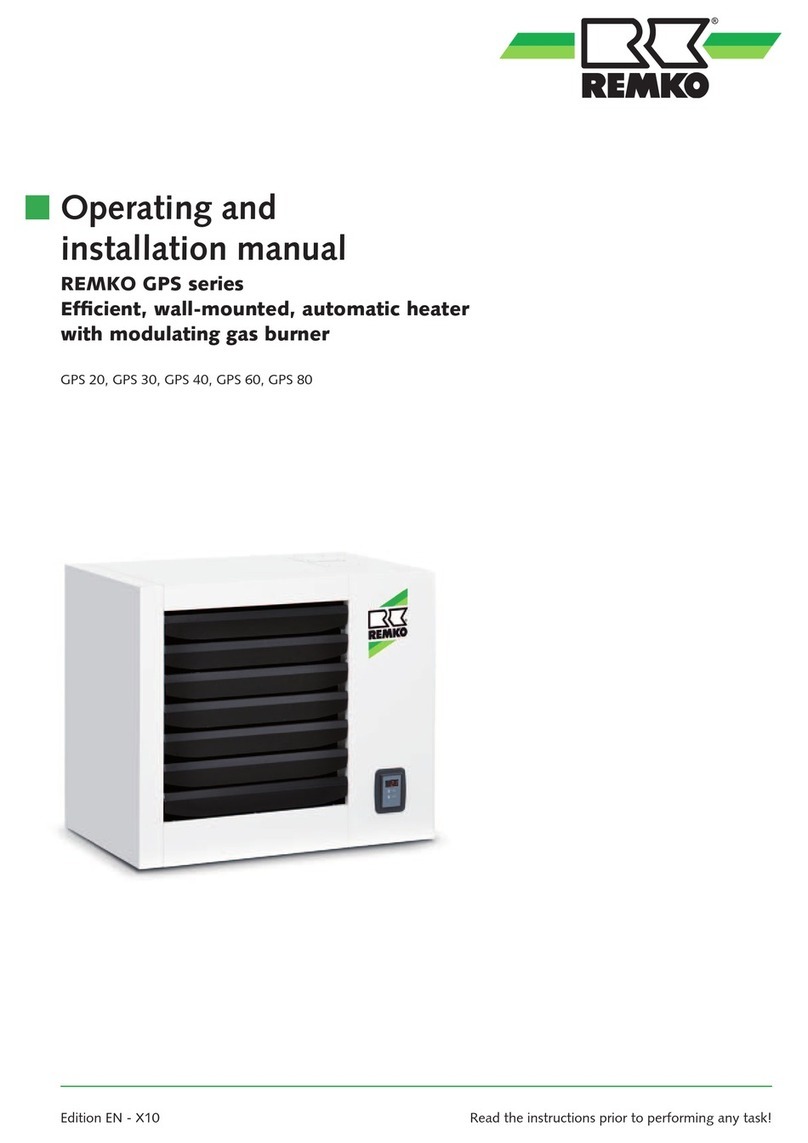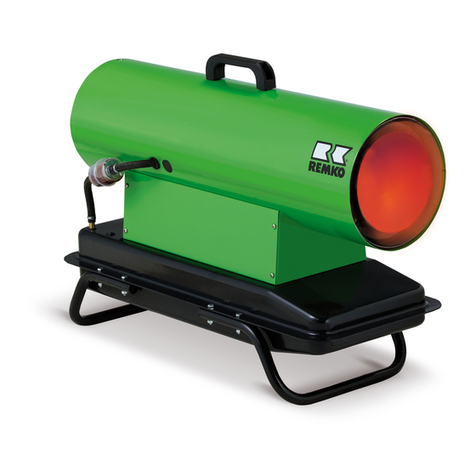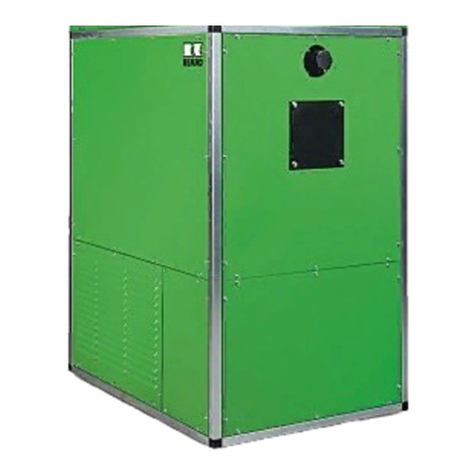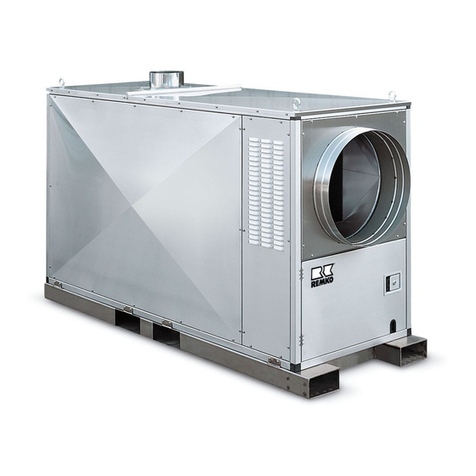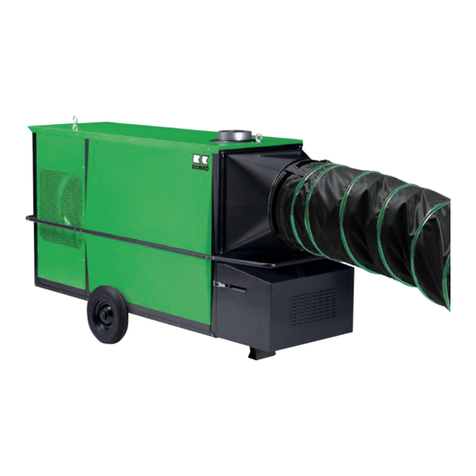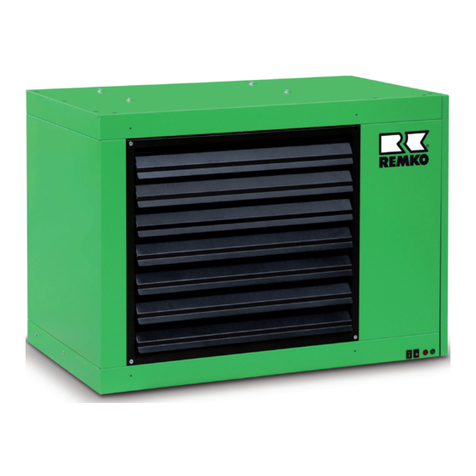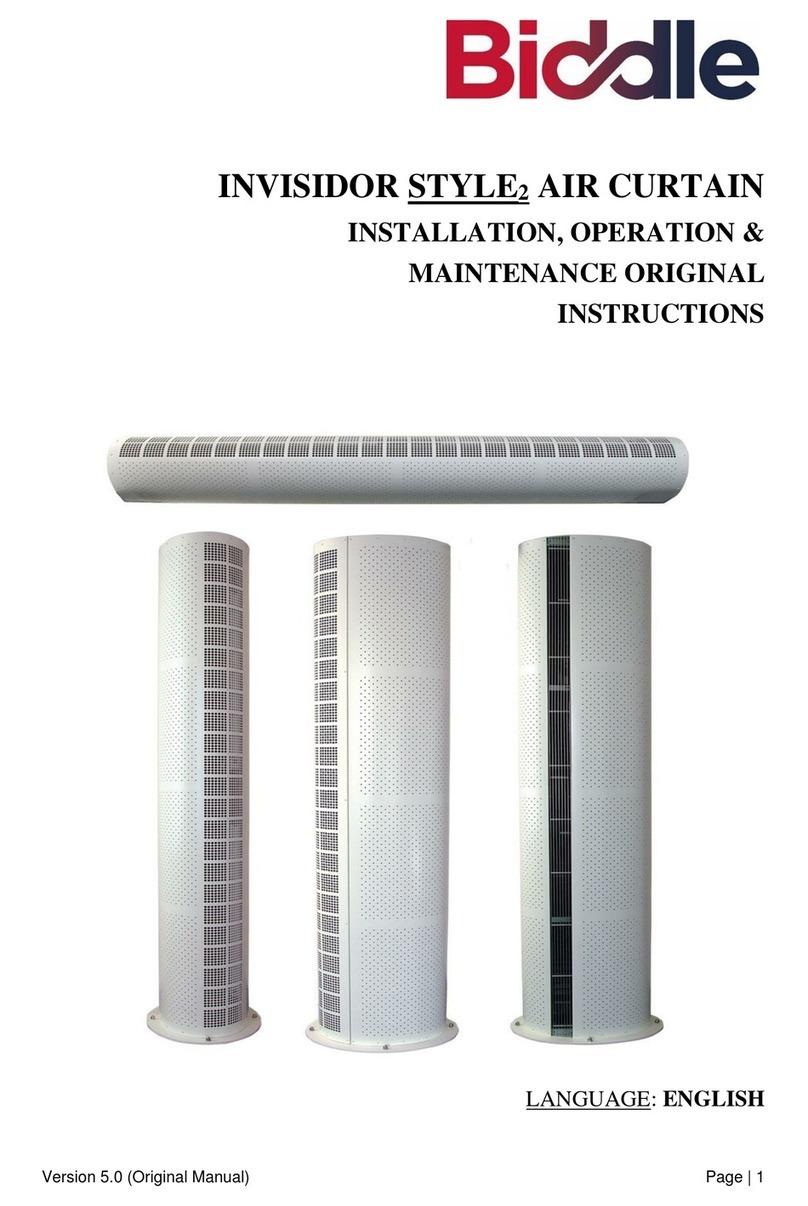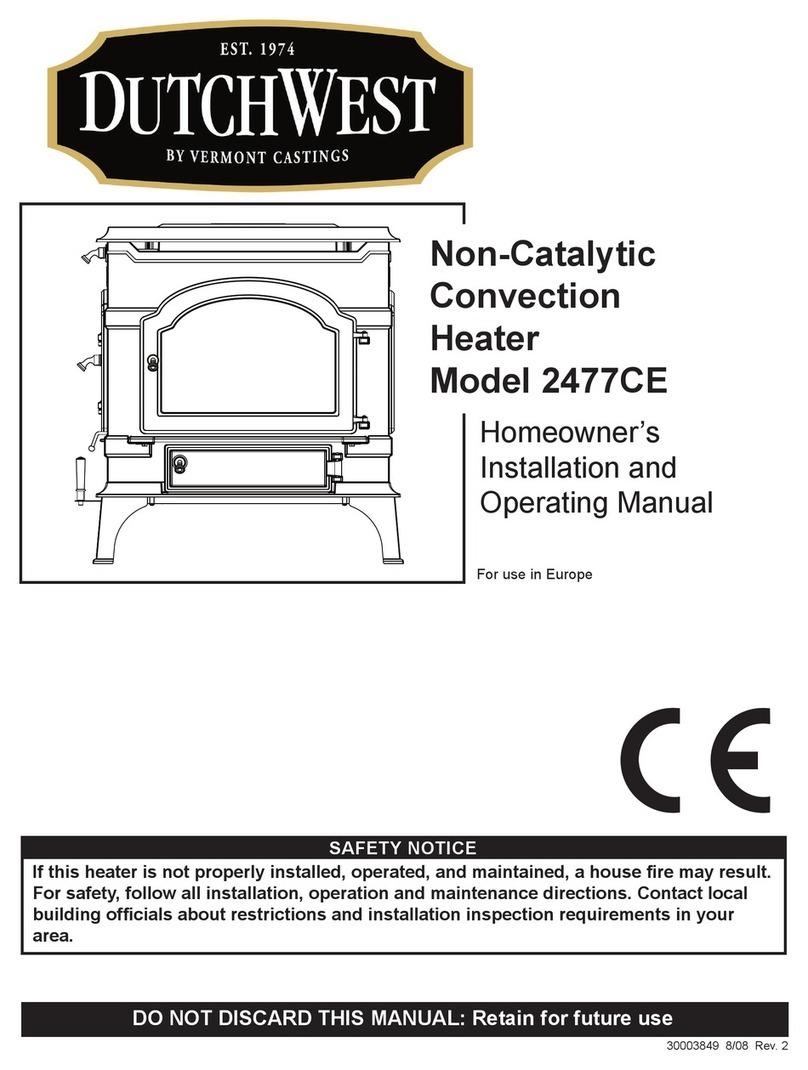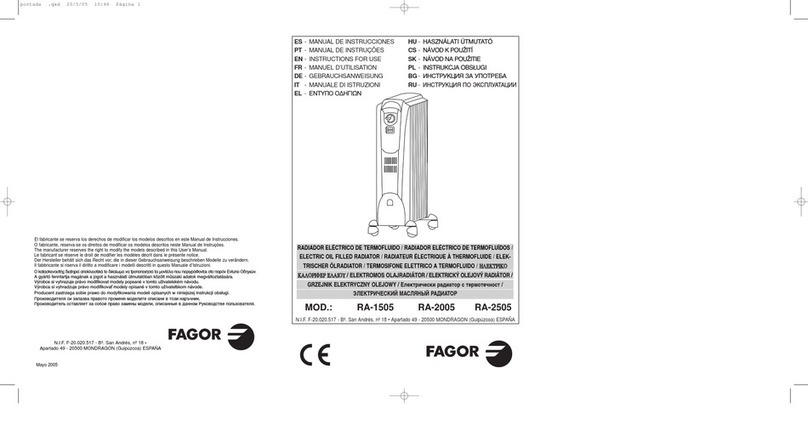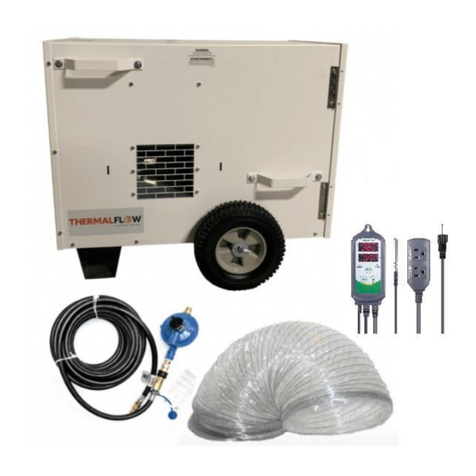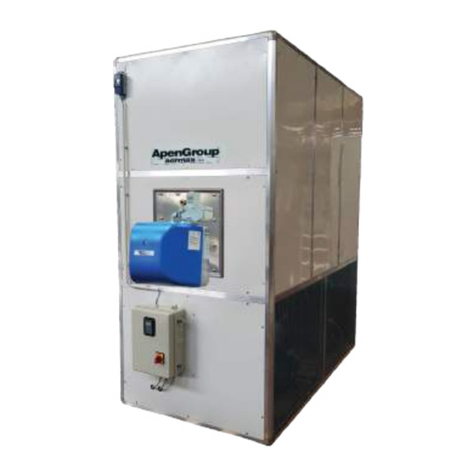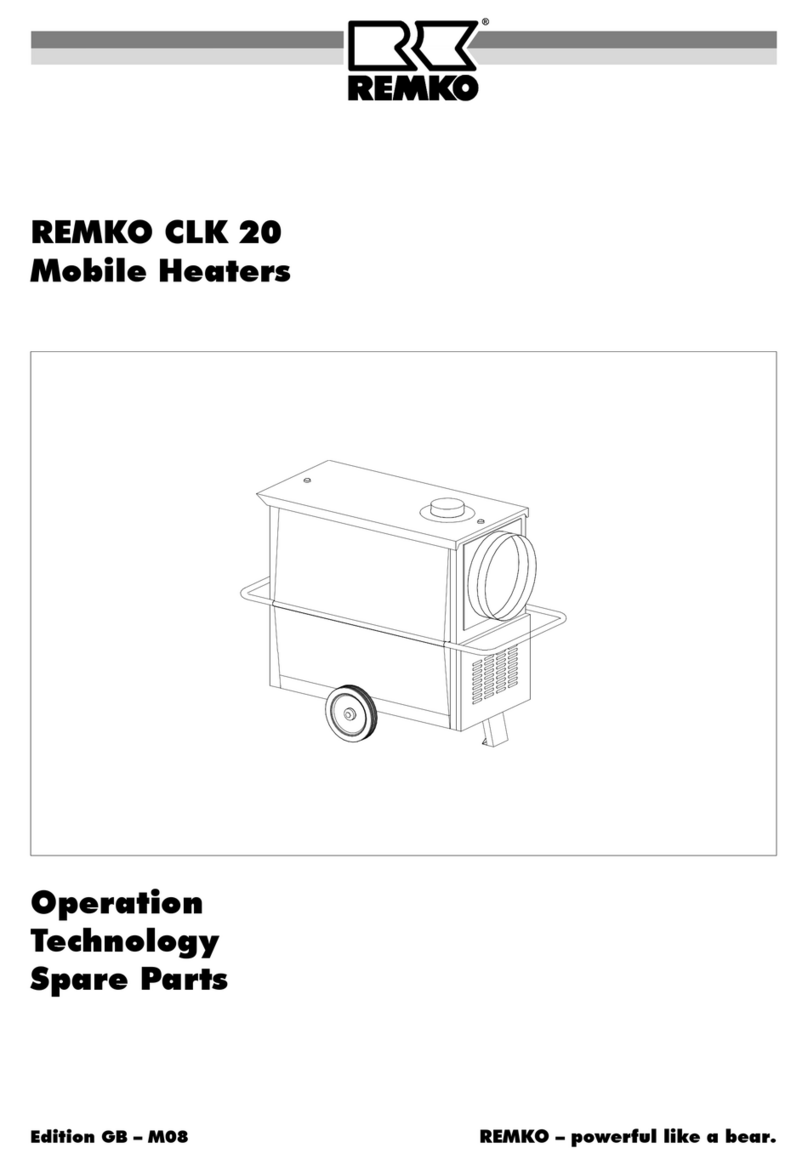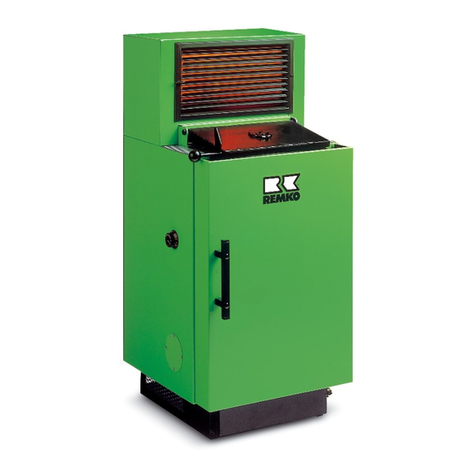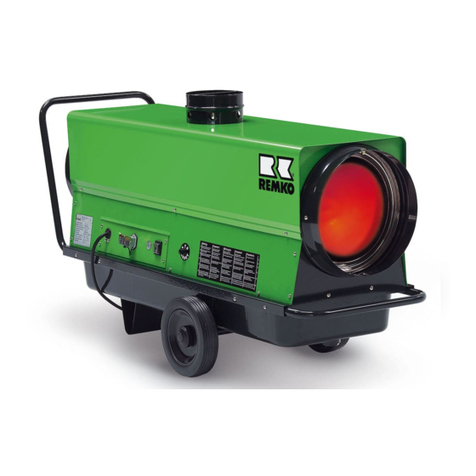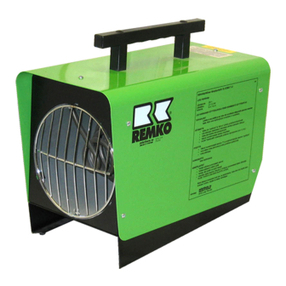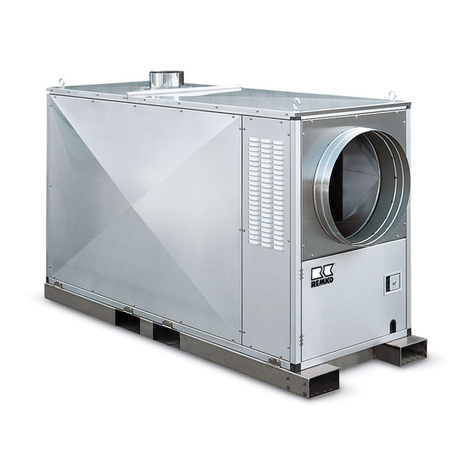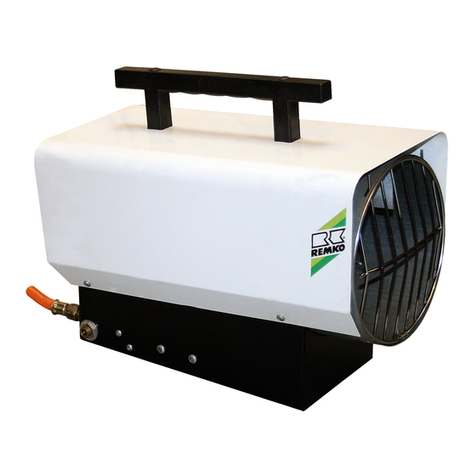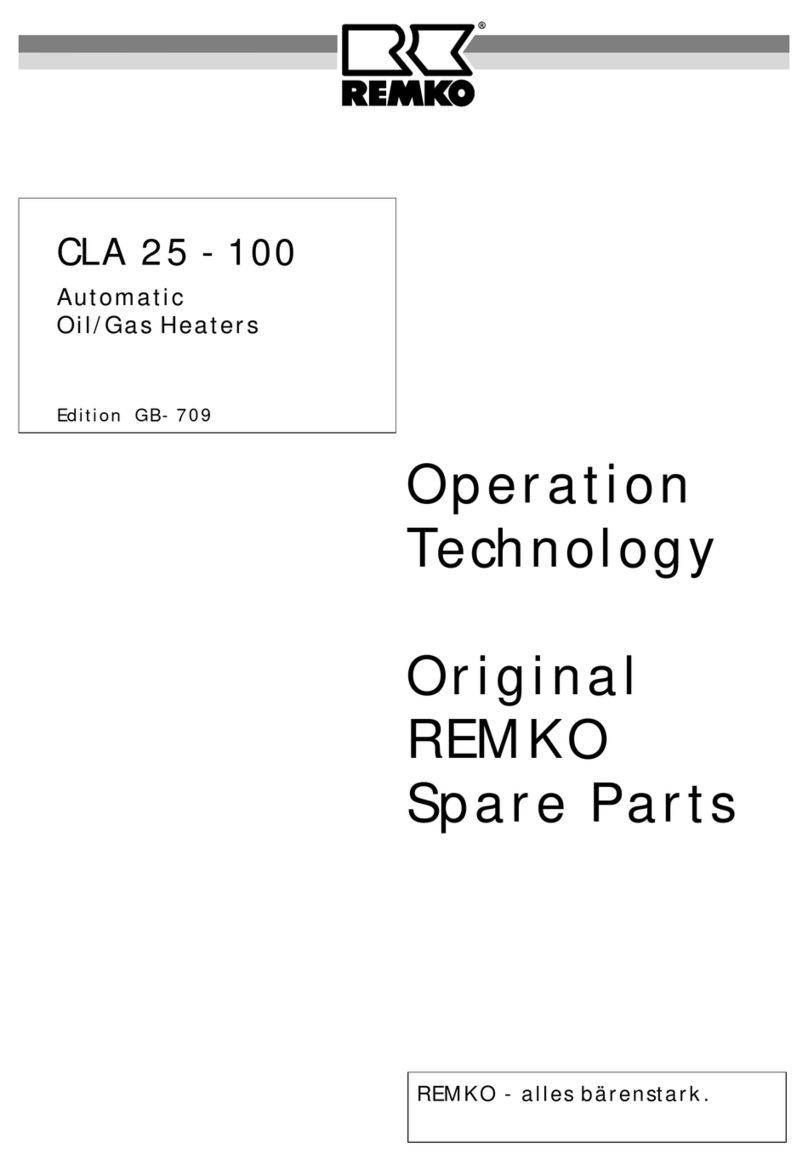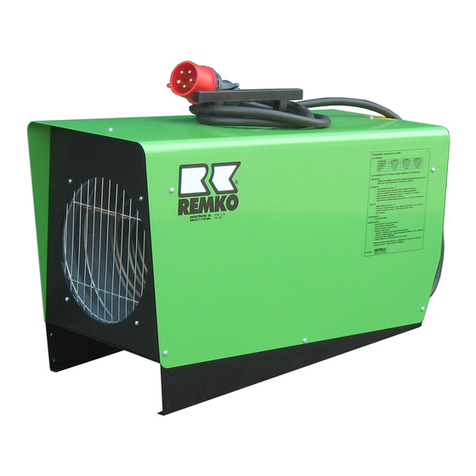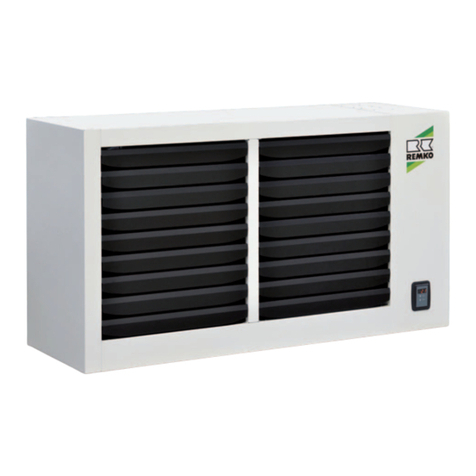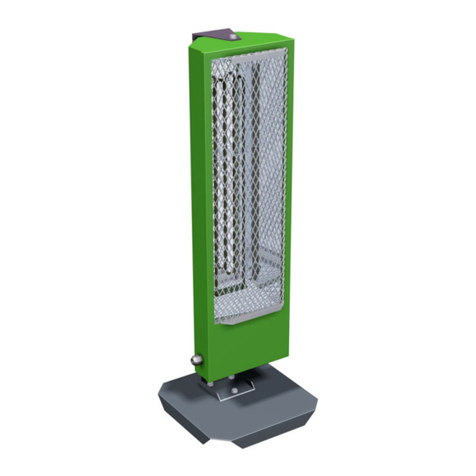
6
REMKO ATK series
Specifications for fan-assisted heaters
When using the units
the respective applicable
guidelines must always
be observed.
■
Combustion plant order
(FeuVo) for the individual
federal states
■
Accident prevention regulations
(UVV) "Heating, flaming and
melting devices for construction
and installation work" (VBG 43)
■
Workplace directives ASR 5
■
Workplace regulations §§ 5
and 14
Extract from the accident
prevention regulations (VBG 43)
§ 37 Operating personnel
The units may only be operated by
persons that have been instructed
in the operation of the equipment.
§ 38 Installation
(1) The units must be installed on a
stable base.
(2) The units must be installed and
operated in such a way that
persons are not endangered
by exhaust gases and radiant
heat and no fires may occur.
(3) The units must then only be
installed and operated in areas
where the units can be supplied
with an adequate amount
of air for the combustion
and the exhaust gases can
be routed to the outside via
exhaust gas ducting.
There is enough natural air
supply for the combustion if,
for example, the space in m3
is at least 10 times the nominal
heating capacity in kW of all of
the units operating in the space
and if the natural change of air
is guaranteed by windows and
doors.
(4) In derogation from point 3,
the units may be operated in
a space without exhaust gas
ducting if this is well ventilated
(both incoming and outgoing
air) and the proportion of
health endangering substances
in the breathing air does
not reach a detrimental
concentration.
There is good natural
ventilation if, for example:
1. the room volume in m3is
at least 30 times the nominal
heating capacity of all of
the units operating in the space
and if the natural change of
air is guaranteed by windows
and doors or 2. there are non-
closable openings for incoming
and outgoing air in the vicinity
of the ceiling and floor whose
size in m2is at least 0.003
times the nominal heating
capacity of all of the units
operating in the space.
(5) The units may not be installed
or operated in potentially
flammable or explosive
environments or areas.
§ 44 Space drying
(2) In derogation from § 38 section
3 heating units can be used for
drying areas with adequate air
supply for combustion without
having to route the exhaust
gases through exhaust gas
ducting to the outside.
It is forbidden for personnel
to remain in these areas for
extended periods.
Appropriate prohibition signs
should be put up at the
entrances.
§ 53 Testing
(2) In accordance with
the operating conditions,
the units must, if necessary,
be checked at least yearly by
a specialist to ensure that they
are in a condition that is safe
to use.
The exhaust gas values
for the burners must also
be checked.
§ 54 Monitoring
(1) The personnel tasked with
operating the units must check
the units for visible defects
on the operating and safety
devices as well as the presence
of the protective devices at
the start of work.
(2) If defects are discovered
these must be reported to
the supervisor.
(3) In the case of defects that
endanger the operational safety
of the unit, it must be taken out
of service immediately.
§ 55 Infringements
Infringements in the sense of
§ 710 section 1 of the Imperial
Insurance Code (RVO) pertain to
an intentional or negligent breach
of the provisions of VBG 43.
